What is sand and gravel mixture? Gravel-sand mixture: types and technical characteristics
The high pace of construction, the accelerated development of residential areas and office buildings makes us think about the quality characteristics of concrete. It is impossible to create a strong, strong foundation without concrete mortar. Concrete is the main connecting and structural material in construction. The quality of concrete directly affects the strength and service life of structures. The solution can be prepared from sand and gravel mixtures, paying attention to the source of origin and observing the required ratio of components.
The sand-gravel mixture, or in other words ASG, consists of gravel. The composition is prepared in two ways:
- natural;
- artificial.
The resulting mixture is in great demand and is used in industrial, road, and housing construction:
- For ;
- for the manufacture of monolithic, reinforced concrete structures;
- as a drainage layer road surface;
- landscape leveling.
Types, mixture structure
 Gravel in the mixture should be up to 75% by weight.
Gravel in the mixture should be up to 75% by weight. The proportional content of sand and gravel in the mixture is the main criterion for gravel mass. Gravel should not be more than 75% of the total mass. Great importance is paid to the size of components, and they are also checked for compliance with standards. Based on the proportional content of components, two types of sand and gravel are distinguished:
- Natural (pgs). The ratio of gravel as a percentage relative to the total mass is no less than 10 and no more than 95 - 1/5 of the total composition. The classic composition is not subjected to additional processing. The gravel mass is extracted from a quarry and immediately shipped to the buyer. Basically, the gravel content is 10-20% of the bulk. The percentage can rise to 30 if the mixture was mined in reservoirs. The size of the elements reaches from 10 to 70 mm. By separate agreement with the buyer, the size may be larger than stated, the maximum value is 10 cm.
- Enriched (OPGS). The proportions of the components are as follows: sand 30%, gravel up to 70%. 3/4 of the entire enriched mass is gravel.
The enriched composition can be obtained through special preparation. Observing certain proportions, the necessary components are mixed. The result is opgs. Taking into account the percentage of gravel, five groups of the enriched mixture are distinguished.
- 1 group. The percentage of gravel from the total mass is 15-25%.
- 2nd group. The amount of gravel is 25-30%.
- 3rd group. The component content is from 35 to 50%.
- 4th group. The percentage of gravel is 50-65%.
- 5 group. Gravel in quantities from 65 to 75%.
The greater the percentage of gravel contained in the solution, the harder the mass is. Depends on the amount of gravel technical specifications solution, operating parameters. The final cost of concentrated gravel compounds is influenced by the amount and percentage of content natural stone.
According to the deposit and initial source of formation, natural gravel mixtures subdivided:
- Gully (mountain) are characterized by an admixture of rocks, the shape of the natural stone is acute-angled, the size is different. The heterogeneity of the structure of this type does not allow the use of the ravine-mountain type for the production of concrete. The mixture is widely used as drainage during the repair of highways, filling pits and pits.
- River (lake) A small amount of clay and shell rock is observed. The shape of the elements is rolled.
- Marine. Impurities are contained in small quantities or absent. The shape of the stones is round and dense.
Lake-river and sea gravel mixtures are used to make concrete mortar, necessary for buildings of special strength, and for pouring foundations.
Features of mass selection
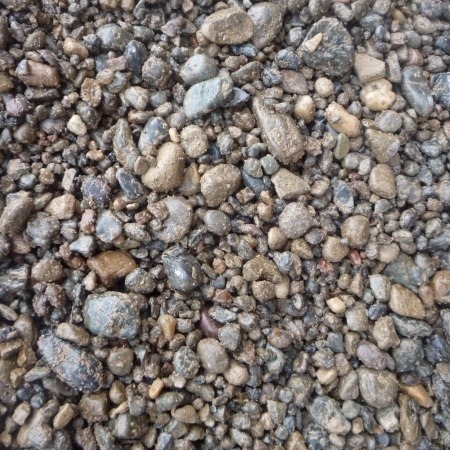 The enriched sand and gravel mixture should have the largest grains of gravel.
The enriched sand and gravel mixture should have the largest grains of gravel. In all branches of construction: preparation of structures, pouring any type of foundation, concrete is required. A responsible approach to the production of concrete mortar ensures reliability and strength of structures. The ratio of components plays an important role in the technological process.
The main point is to buy high-quality products correctly; you should not save. The concrete reflects the method of extraction of the material. Pay attention to various impurities; the structure of the mass should not contain them. The absence of foreign components increases the adhesion between the gravitational mass and other components of the solution.
To work with the foundation, enriched mixtures are used, since the amount of gravel in them exceeds the sand content, which increases the density and reduces the looseness of the solution.
Compaction degree
Transportation of a bulk substance leads to its compaction. Compression is controlled by regulatory building standards. The exponential value that determines the amount of reduced volume is called the compaction coefficient. Compaction standards are set at the state level.
Compacting the material is a natural process; the coefficient depends on the mass of the batch. Important points are the quality of the material and the method of transportation. The average compaction index is 1.2, according to the standards. For example, for sand the compaction index is 1.15, for crushed stone - 1.1.
The compression ratio is an important point in construction. At the beginning of work it is carried out preparatory stage, during which the thickness, level, quantity and other indicators necessary for subsequent work are determined. The acceptance of the final result is influenced by the compaction factor.
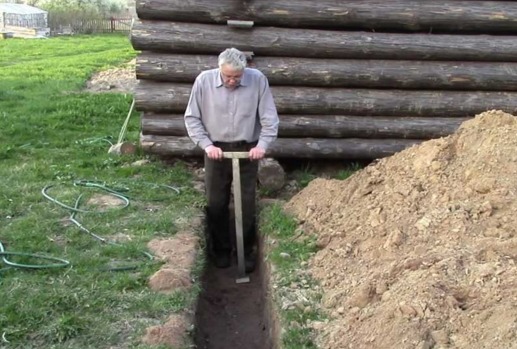 Tamping sand and gravel mixture.
Tamping sand and gravel mixture. When compacting soil using the tamping method, the main rules are followed. Differences in the depth of the dug trench are leveled out by compaction from the highest elevations, gradually moving to lower ones. Compaction is carried out until the density required by the standards is achieved. When working with the mixture, freezing of materials is not allowed; humidity is normal. The process is considered complete when the number of strikes does not exceed the established limits. The so-called “two control strikes” rule.
Concrete preparation process
During individual construction, the mixture is prepared with your own hands. For small construction volumes, there is no need to hire expensive construction equipment. Before starting work, it is worth determining the structure, calculating the mass, and preparing the appropriate components.
To mix yourself, you will need the following consumables and tools:
- stock of cement of the required brand;
- clean warm water;
- opgs;
- kneading container;
- (concrete mixer);
- bucket.
Correctly matched components affect the quality result. For an enriched look, it is worth making the ratio of parts 8 to 1, where the first is the mixture, the second is cement. This coefficient was determined by trial and inspection, and is still actively used by experienced craftsmen. How much water to add is an individual matter. It is worth focusing on the dryness of the components, gradually adding liquid until the desired consistency of the solution is achieved.
 Portland cement - hydraulic binder, hardening in water and air.
Portland cement - hydraulic binder, hardening in water and air. Cement for mortar is used of those brands that provide the required strength. These are M300, M500, M600. Recently, Portland cement has become popular because it has excellent astringent properties. For a small amount of work, M400 concrete is used, taking into account the fact that the finished mixture should be used within two hours.
High-quality concrete made from PGS is influenced by the size of natural stone. The solution acquires the required strength when the gravel size is 8 cm. The required proportions are maintained: 6 - mixture, 1 - cement.
Determining the mass of a cube of any material depends on the weight of each individual component. Big role the brand of cement plays. Special tables that display the amount of mixture and cement help to maintain the correct amount. There is a way to calculate the required proportions without complex calculations. One limitation must be met: the cement binder fills all the voids between the solid components of the mixture.
It is easy to determine the required quantity. Take a measuring cup and a bucket for the solution. Place the enriched sand and gravel mixture into the prepared bucket and fill it with liquid from a measuring cup. When the opgs is completely covered with water, we calculate the water consumption. The liquid consumption is equal to the required amount of cement, which will subsequently be added to the OPG. Add the liquid to the dry mixture gradually until the mass becomes plastic.
Concrete acquires its strength 28 days after pouring. There is just no need to wait for the full cycle to extend further work. Concrete reaches 70% hardness in three days, which is enough to build walls.
Conclusion
It is possible to make concrete from PGS yourself with good experience working with bulk materials. It's better for a beginner to use ready-made mixture, which is enough to dilute with water.
This approach will reduce the risk of possible errors, because incorrectly added mass of components affects the quality of the foundation and the entire building as a whole.
Sand-gravel mixture, as the name suggests, is a combination of two bulk materials: sand and gravel. This product may have different origins; on this basis it is divided into natural mixture and enriched. The first is also abbreviated as ASG and is produced through direct extraction. The second (OPGS) is made by artificially mixing gravel with sand or by another method, when the natural sand-gravel mixture is additionally enriched with gravel.
Applications
These mixtures are used in road construction - when constructing a road surface, a drainage layer, a base for a coating, etc. ASG can also be one of the components in the preparation of concrete. In addition, it is often used when working on large landscape projects.
ASG qualities
There are several basic parameters.
So, the characteristics of the sand-gravel mixture:
What amount of sand and gravel does it contain as a percentage (for example, 70% gravel to 30% sand);
What is the largest size of fractions in gravel (10mm, 20mm, etc.);
gravel characteristics:
grain composition,
strength indicators,
percentage of weak grains,
frost resistance data,
the presence of clay in lumps, as well as dust-like, clay inclusions,
mineralogical composition;
indicators for sand as part of a sand-gravel mixture:
fineness module,
grain composition,
presence of organic impurities,
the amount of dust, clay impurities and clay in lumps,
mineralogical composition.
So, for example, the largest size of gravel grain in an ASG cannot be less than 10 mm or more than 70 mm. And in OPGS it is equal to 1, 2, 4 or 7 cm. Sand in the composition of OPGS is usually medium and large fractions.
Density of sand and gravel mixture or weight of one cube
Often, for ease of calculations, builders equate the density of the sand-gravel mixture to the density of the sand it contains. Calculations will be more accurate if you take into account the percentage of gravel and sand in a particular mixture. According to laboratory research a coefficient of 1.65 was calculated to convert the volume of PGS to its weight. That is, the weight of a sand-gravel mixture with a volume of 1 m3 will thus be equal to 1.65 tons. You, of course, understand that this indicator is very approximate and can produce a significant error. Ideally, it would be to conduct the experiment yourself by weighing some kind of measuring vessel with the mixture. If you need to calculate bulk density, fill the vessel with the mixture without further compaction and “cut off” the pile of excess material exactly along the edge. Specific gravity sand-gravel mixture and its true density is greater than volumetric weight and bulk density, they need to be measured during high-quality compaction of the ASG. Thus, the required values will be equal to the ratio of the resulting mass to the volume of our container (for example, a 10-liter bucket).
Here it is worth mentioning the composition of the taken ASG. If it contains such a light material as expanded clay, then the density will correspondingly decrease significantly. The compaction of a sand-gravel mixture can be calculated by knowing the compaction coefficient. As a rule, it is indicated in project documents.
Other types of building mixtures: PShchS, ShchGPS
The sand-crushed stone mixture is obtained as a result of crushing rocks. Due to the rough surface, crushed stone has better adhesion than gravel. Another type of mixture for construction, crushed stone-gravel-sand mixture (SHGPS), is most often used in the construction of runways at airfields. Also used in road construction.
Among the variety of materials on the construction market, the leading position is rightfully occupied by gravel-sand mixture. Its production volumes and areas of application exceed all other rocks.
Composition of gravel-sand mixture
The name of this bulk material speaks for itself: the components of the mixture are sand and gravel. The standards provide for a certain amount of dust inclusions and clay lumps. The content of the former should not be higher than 5%, the latter - no more than 1%.
Gravel-sand mixture can be natural or enriched. Natural (PGS) is produced by direct extraction, and enriched is obtained by artificially mixing sand and gravel.
The percentage of gravel in the mixture is essential. Its cost also depends on this. The presence of gravel is acceptable at least 15%, but in some cases its amount can be 75%.
Types of PGS
Being a mineral, a gravel-sand mixture accumulates in the depths over millions of years. Its composition largely depends on the climatic conditions of a particular region and has its own characteristics, being divided into several types.
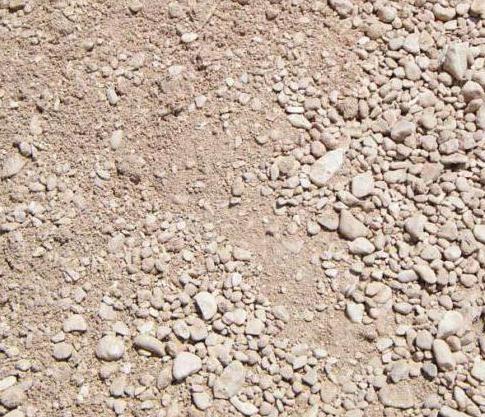
Qualitative characteristics
Existing parameters allow you to select a gravel-sand mixture of appropriate quality. First of all, you need to pay attention to the percentage ratio of sand and gravel (for example, it can be 30 to 70), the largest size of the fractions (they should have a value from 10 to 70 mm), as well as the characteristics of gravel and sand (grain composition, indicators strength, the number of soft rock grains in percentage terms, the composition of minerals and the presence of clay inclusions).
Another important parameter that characterizes the gravel-sand mixture is the density or weight of one cubic meter. To simplify calculations, some builders take the density of the sand contained in the mixture. To obtain more accurate indicators, the ratio of sand and gravel should be taken into account in each specific case. In laboratory conditions, a coefficient of 1.65 was obtained, which makes it possible to convert the volume of the sand-gravel mixture into its weight. Thus, it turns out that the mass of 1 m³ of the mixture is 1.65 tons. However, this figure is quite approximate and may have a significant error.
Scope of application
The gravel-sand mixture serves as a material for leveling a construction site; it is used to create the first stable layer during concreting, in the construction of road surfaces, when backfilling pits and trenches, during the construction of structures and when laying communications.
The most popular is an enriched sand-gravel mixture, which contains sand and gravel in a ratio of 30:70, respectively. Such mixtures have high strength and do not shrink even under very heavy loads. This material is indispensable when leveling territories in landscape design and as a main component in the production of concrete. 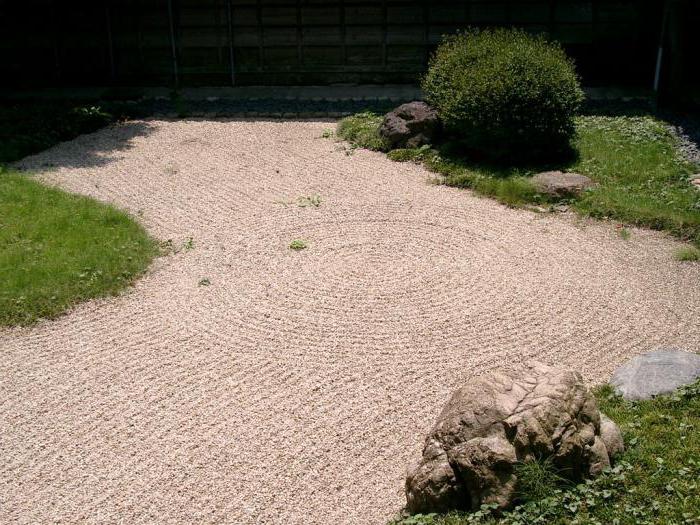
The sand and gravel mixture extracted from the quarry can be immediately used to create a drainage layer, level the local area, create a foundation and build roads.
Crushed stone-gravel-sand mixture
This material is produced by mixing fractions of granite rocks. It is used primarily for constructing the base of asphalt concrete roads. To prevent deformation of the roadbed, this most important part during road construction must have a high degree of compression, tension, and distribution capacity.
Various regulatory documents allow the use of sand-gravel mixtures in this industry: crushed gravel, fractionated crushed stone and metallurgical slag. But the crushed stone-sand mixture, due to its optimal composition and a number of advantages, occupies a special place in this list. This material is completely ready for use and does not require a mixing plant. A homogeneous layer prevents the formation of reflected cracks on the asphalt. Laying can be done in any weather conditions, and the mixture can be successfully stored in roadside piles for quite a long time. 
The brand of crushed stone used must meet all the requirements in terms of plasticity and water resistance. Crushed stone-gravel-sand mixtures must have a certain content of the main components, as well as the required consistency. GOST 25607-2009, introduced in 2010, will help determine the mixture number corresponding to a certain fraction. This standard also applies to crushed stone-sand and gravel-sand mixtures.
 The first serial bioprinter was created
The first serial bioprinter was created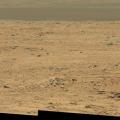 Curiosity rover How to find a “face” on Mars
Curiosity rover How to find a “face” on Mars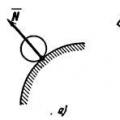 Technical mechanics of connections and their reactions free What types of connections are considered in statics
Technical mechanics of connections and their reactions free What types of connections are considered in statics